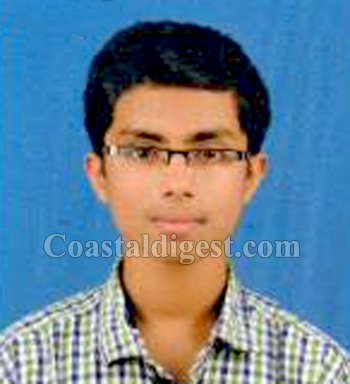Bengaluru, May 28: The Common Entrance Test results were announced on Saturday by Minister for Higher Education T.B. Jayachandra.
Of the 1.78 lakh candidates who had applied, 1.71 lakh students appeared for CET. Assessment of performance was done on the basis of the revised key answers. According to the merit list generated for different courses, 41,530 candidates are eligible for admission to medical and dental courses, 99,791 for Indian Systems of Medicine (ISM) and Homoeopathy courses, 1.27 lakh for engineering and technology courses and 1,395 for architecture course. That apart, 96,341 are eligible for agriculture, 99,788 for veterinary, 1.31 lakh for B.Pharma and Pharma-D courses.
 Toppers
Toppers
Ananth G. from Alva's PU College in Moodbidri has bagged the first rank in medical/ dental, and third rank in the ISM and Homoeopathy. The second and third ranks in medical/ dental have been secured by Sanjay M. Goudar from Seshadripuram PU College, Yelahanka, and Vachana Shree Patil from Shaheen Independent PU College in Bidar. Sanjay and Vachana Shree Patil have also bagged the first and second ranks in ISM and Homoeopathy.
In engineering, the first rank holder is Milind Kumar Vaddiraju from V.V.S. SardarPatel PU College, Bengaluru. The second and third rank holders have been bagged from Niranjan Kamath from Expert PU College and Divya A. Jamakhandi from KLES Independent PU College. In Architecture, the first three ranks have been bagged by Mrudulaa C.R. from CMR National Public School, Aishwarya Mahadevan from The Amrutha Academy, and Neha Sarah Abraham from Sophia High School.
Full scholarship
Mr. Jayachandra said that unlike previous years, the full scholarship for the top five rankers of CET will be extended to the full course from this year.
Meanwhile, there still is no clarity on whether CET will be applicable to only government quota seats in medical colleges. Minister for Medical Education Sharanprakash R. Patil said that the centre's Ordinance is clear on there being government quota seats in private colleges. "We are still seeking legal opinion to see what to make of the announcement made by the Karnataka Professional Colleges Foundation on Friday. The government was not consulted in this regard," he said.





Comments
Great achievement...Proud to be ALVA\s Alumuni..."
wow good news for coastal karnataka in every result we defeated bengaluru, bengaluru is all behind us.
ohh anyways congo to this ananth. what if we lose here, sunday IPL will win it for sure
congo boy. all the best. govt should support him to reach high level and implement his knowledge for the good cause.
where is the treat bro,
well done ananth, indian stars!
all the best for the future studies, get good things to india, dont go to abroad,
congratulations ananth, your hardwork treat to u,
Add new comment